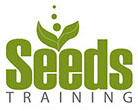

The SOS Model
A simple framework for delivering feedback that works and builds relationship.
Feedback is a critical part of the process of improving results. When we work with others as a mentor, we must be prepared to give feedback that is relevant and that enables our students to make incremental improvements.
At the onset of the mentoring relationship, introduce the concept of giving and receiving feedback. Use the S.O.S. Model to make sure that the feedback process is fully transparent. Here’s how it works:
STRENGTHS
Most students are used to receiving only negative feedback. This model starts with the opposite. We start by focusing on the strengths of the student. Regardless of the situation, begin the feedback process with what is working, what the student is doing well and what positive skills they are exhibiting. Focusing on strengths does two things:
1. In most cases, it’s minor adjustments that allow a student to move from good to great. When we focus on strengths first, it keeps their attitude positive and gives them the feeling that they are close to being better.
2. Starting with the strengths builds rapport between the mentor and student. This may be the only interaction they have ever had with an adult where the adult recognized their strengths. This feels good and creates a much different context for the mentoring relationship.
Begin the S.O.S. conversation by saying, “Here are some things that you are doing really well…”
OPPORTUNITIES
Remember that communication is about creating Positive Mental Images (PMI). After we focus on the strengths, now we need to spot the areas where improvements can and should be made. These are not “faults”, “weaknesses” or “problems”. These are framed as “opportunities”.
The key here is to prioritize which improvements are most vital. Instead of giving a student a bunch of opportunities, choose one or two that would make the biggest difference.
For example, we could start this part of the conversation by saying, “Here are two opportunities that I see to make improvements…”
SUPPORT
True mentoring is about creating relationship with the student and about being a part of their support system. Every time we run through this model, it ends with a focus on support. Specifically, as mentors we need to tie up this mentoring conversation by doing two things:
1. Help the student to identify people who can support their goals. This may change with each goal or even in each phase of the goal attainment process.
2. Offer support that we feel comfortable providing. We are not here to tell our students what to do, we are here to model and to help them get better results. Be prepared to get involved.
We can start this part of the conversation by saying, “What kinds of support do you need? What can I help you with?”
The S.O.S. Model works because it is relationship-based and helps to make the student feel supported. Use it to ENGAGE your students.
info@seedstraining.com
Copyright Seeds Training 2013

